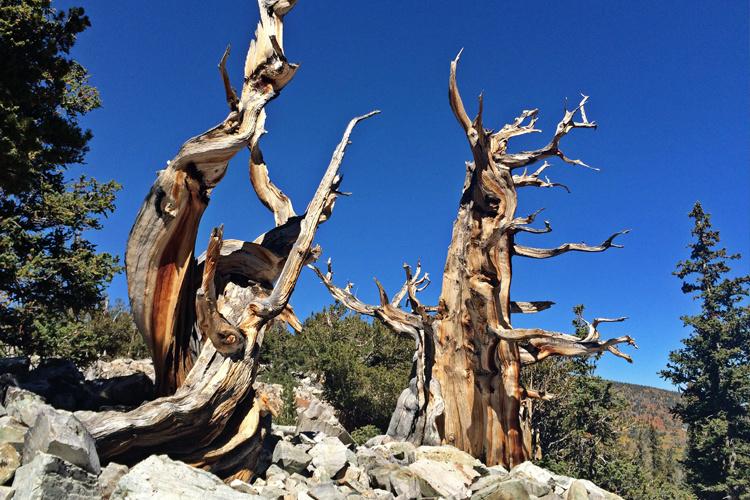
Crossdating is one of the most important steps in developing an otolith chronology and is done prior to measuring annulus widths. Starting from the edge of the otolith, each annulus is dated with the calendar year of formation. Anomalously wide or narrow increments are visually matched among individuals. Crossdating ensures that annuli are not inadvertently missed or false annuli (“checks”) are added when taking measurements and that all annuli are accurately dated.
Fish otoliths and other hard parts that form annual growth increments (annuli) in marine organisms act as natural chronometers. Similar to tree rings, an organism’s growth trajectory and environmental history are recorded in these annuli. Some years are very good for growth (wide annuli), while growth can be poor in other years (narrow annuli). The guiding principles of dendrochronology (tree-ring science) can be applied to fish otoliths to understand this variability in growth. One of the most important of these principles is that growth is limited by some aspect of the environment, such as temperature. As climate varies over time, it induces synchronous growth patterns in all individuals from a given species and region. These synchronous growth patterns can then be matched among individuals, allowing each increment to be precisely and accurately dated. Various statistical methods can be applied to account for effects of age on annulus growth trajectories; generally, as a fish grows older, its annuli become relatively narrower, though interannual variation due to environmental effects remains. Finally, a “master chronology” is developed. The master chronology represents the average relative growth signal of a species from a given region. Dendrochronology methods thereby allow us to hindcast relative growth and identify potential environmental drivers of growth in fish populations.

This is a close-up photograph of a yellowfin sole otolith. There is a lot of variability in annulus width from year to year. We call years that are anomalously wide or narrow “signature years.”Here, 1987, 1995, and 1995 are examples of narrow signature years or years when growth was poor.

Annulus width time series of yellowfin sole. Top: raw annulus width measurements (each line represents the growth trajectory of one fish). Bottom: annulus index for each fish after age-related trends have been removed (gray lines) and the “master chronology” (black line), which describes the average growth of the sample.
Research
- Matta ME, Helser TE, Black BA (2016) Otolith biochronologies reveal latitudinal differences in growth of Bering Sea yellowfin sole Limanda aspera. Polar Biology 39(12):2427-2439. doi:https://10.1007/s00300-016-1917-y.
- van der Sleen P, Dzaugis MP, Gentry C, Hall WP, Hamilton V, Helser TE, Matta ME, Underwood CA, Zuercher R, Black BA (2016) Long-term Bering Sea environmental variability revealed by a centennial- length biochronology of Pacific ocean perch Sebastes alutus. Climate Research 71(1):33-45. doi:https://10.3354/cr01425.
- von Biela VR, Kruse GH, Mueter FJ, Black BA, Douglas DC, Helser TE, Zimmerman CE (2015) Evidence of bottom-up limitations in nearshore marine systems based on otolith proxies of fish growth. Marine Biology 162(5):1019-1031. doi:https://10.1007/s00227-015-2645-5.
- Matta ME, Orland IJ, Ushikubo T, Helser TE, Black BA, Valley JW (2013) Otolith oxygen isotopes measured by high-precision secondary ion mass spectrometry reflect life history of a yellowfin sole (Limanda aspera). Rapid Communications in Mass Spectrometry 27(6):691-9. doi:https://10.1002/rcm.6502.
- Black BA, Matta ME, Helser TE, Wilderbuer TK (2013) Otolith biochronologies as multidecadal indicators of body size anomalies in yellowfin sole (Limanda aspera). Fisheries Oceanography 22(6):523-532. doi:https://10.1111/fog.12036.
- Helser TE, Lai HL, Black BA (2012) Bayesian hierarchical modeling of Pacific geoduck growth increment data and climate indices. Ecological Modelling 247:210-220. doi:https://10.1016/j.ecolmodel.2012.08.024.
- Matta ME, Black BA, Wilderbuer TK (2010) Climate-driven synchrony in otolith growth-increment chronologies for three Bering Sea flatfish species. Marine Ecology Progress Series 413:137-145. doi:https://10.3354/meps08689.

